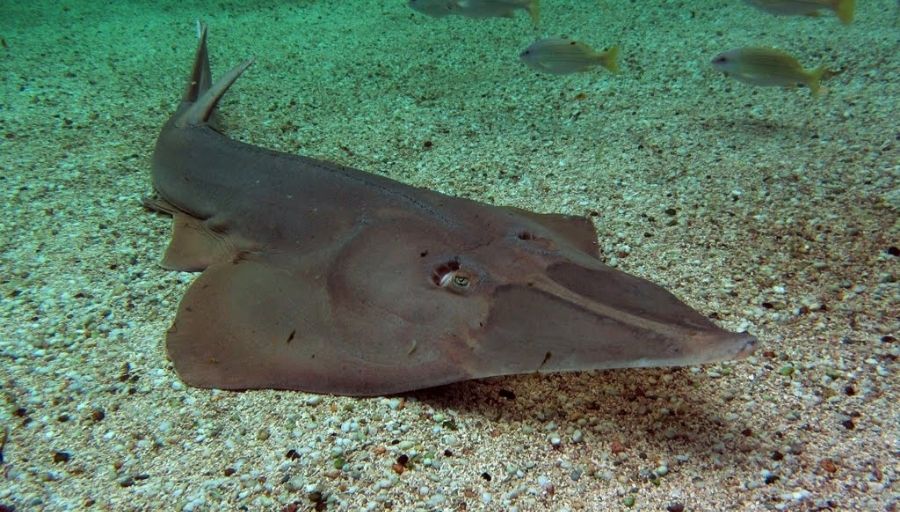The Shovel Nose Shark, also known as the Shovelnose Guitarfish and Sand Shark, is actually not a shark at all, it is a type of ray. It looks like a shark and a ray had a baby, so it is easy to get confused. It has the typical wing-like pectoral fin of a ray and the rest of it’s body resembles a shark. Read on to find out more about the Shovel Nose Shark!
Shovel Nose Shark – Description
Due to it’s shark-shaped body, early scientists classed the Shovel Nose (Rhinobatos productus) as a shark species. However, after more in-depth research it has been discovered that they are in fact more closely related to a diverse group of fish called ‘Skates’.
Skates are cartilaginous fish of the family Rajidae in the superorder Batoidea of rays. There are over 150 species of Skates. Soft-nosed Skates and Pygmy Skates used to be treated as subfamilies of Rajidae (Arhynchobatinae and Gurgesiellinae), but are now studied as separate families. Alternatively, the name ‘Skate’ is used to refer to the entire order of the Rajiformes.

Like most rays, the Shovel Nose Shark lives on the seabed and settles on the soft sandy or muddy bottoms of rocky reefs.
Due to the Shovel Nose Shark’s ability to pump water through its gills, it is able to remain motionless. They do not have barbs or spines like other rays, so they are safe when they come into contact with humans.
The Shovel Nose Shark is associated with the seabed, with most of their prey living on the ocean floor. They eat a variety of benthic fish, invertebrates, and decapods like crabs and shrimps. The most known predators of the Shovel Nose Shark are larger coastal sharks and the California sea lion.
Shovel Nose Sharks reach sexual maturity at an estimated age of seven to eight years old. At this age, males can grow to 90cm to 100cm long, and females can be slightly longer at around 99cm long. This species can live up to 11 years, and fully grown adult sizes are around 120cm in males and 137cm in females.

They can be found from central California in the south to the Gulf of California. Variations in their genetics and morphological have been found in the mitochondrial DNA in sharks the Gulf of California, demonstrating its isolation from the rest. The Shovel Nose Shark is considered a primitively developed ray with many of the characteristics of sharks.
Shovel Nose Sharks have magnetic particles in their vestibular receptors which are believed to be of exogenous origin. The spatial arrangement of magnetic particles can support the sensitivity of receptors to motion.
Their visual system is more expanded and matured than other Elasmobranchii, with several large projections attached to the brain. Relatively the ventral hypothalamus and entire dorsal are connected to this visual system.
This ray is one of the oldest creatures in the sea, and has been gliding across the ocean floors for over 100 million years.

Reproduction
Shark and ray species reproduce through internal fertilization. The individual embryos receive food from the yolk sack, and the female gives birth to living, fully developed pups. After birth, the young receive no further parental care and are born prepared to lead an independent, predatory lifestyle.
Conservation
Shovel Nose Sharks are directly caught in small fisheries in many areas they live. They are also unintentionally captured in net fisheries when targeting other fish. In some areas (especially in the northern regions of Mexico), their numbers have dropped significantly and environmental scientists now believe that Shovel Nose Sharks are critically endangered. Continuous monitoring of Shovel Nose Sharks is now vital to ensure that these declining trends do not become too severe.
